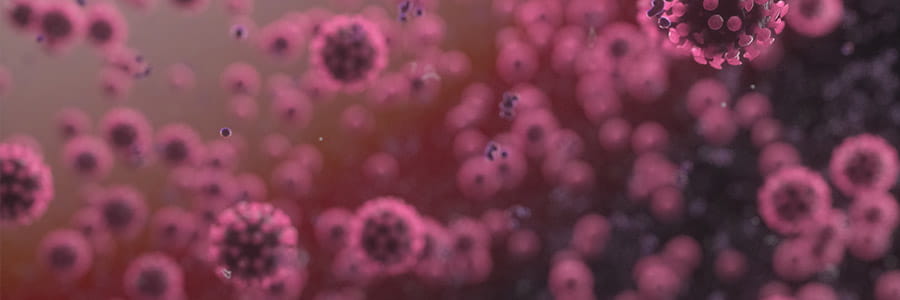What Is the Coronavirus (SARS-CoV-2)?
A coronavirus is a type of virus that causes respiratory infections ranging from the common cold to more serious conditions like severe acute respiratory syndrome (SARS).
A type of coronavirus, known as SARS-CoV-2, emerged worldwide in 2020. SARS-CoV-2 causes the disease COVID-19, which became a global pandemic.
Learn more about SARS-CoV-2 and COVID-19, including causes, symptoms, vaccines, and treatment options.
COVID-19 Causes
SARS-CoV-2 spreads through respiratory droplets.
When an infected person coughs, sneezes, or talks, it releases droplets that can land in an uninfected person's nose, mouth, or eyes. This is how COVID-19 most commonly spreads.
Less commonly, COVID-19 can spread when a person touches an infected surface and then touches their eyes, nose, or mouth.
COVID-19 Risk Factors and Complications
Some people who have COVID-19 may be asymptomatic or only have mild symptoms. But COVID-19 can also lead to more serious — even deadly — complications.
Those most at risk for COVID-19 complications include:
- Older adults.
- People with underlying health conditions (diabetes, heart disease, lung disease, etc.), and/or people who are immunocompromised.
- Pregnant and recently pregnant people.
How to Prevent COVID-19
Follow these tips to lower your risk of getting or spreading COVID-19.
- Get vaccinated. Americans age 6 months and older are eligible for a COVID-19 vaccine. The available vaccines are safe and effective. They are especially effective in preventing severe COVID-19 illness, hospitalization, and death. For more information, visit our vaccine page.
- Wash your hands often. Use soap and water and wash for at least 20 seconds. Be sure to wash after you cough or sneeze, before you eat, after you use the bathroom, and after you touch common surfaces. If you do not have access to soap and water, use a hand sanitizer with at least 60% alcohol. Spread the hand sanitizer on both sides of your hands and rub them together until they are dry.
- Sanitize tables, countertops, doorknobs, and other common items.
- Avoid touching your eyes, nose, and mouth.
- Cover your mouth and nose when you sneeze and cough.
- Avoid close contact with people who are sick. Keep a distance of at least 6 feet.
- Stay home if you're sick. If you are experiencing COVID-19 symptoms like a fever or cough, or if you have been exposed to someone who has tested positive for COVID-19, call your doctor or use UPMC AnywhereCare for guidance. A video visit from home limits the spread of infection.
- If you are experiencing severe symptoms, such as high fever or trouble breathing, you should call 911 or visit an Emergency Department in your community for immediate care.
COVID-19 Symptoms and Diagnosis
COVID-19 symptoms can start anytime from 2 to 14 days after exposure to SARS-CoV-2. They're similar to symptoms of a cold or flu and may include:
- Fever/chills.
- Cough.
- Shortness of breath/difficulty breathing.
- Fatigue.
- Headache.
- Muscle/body aches.
- Loss of taste or smell.
- Sore throat.
- Congestion/runny nose.
- Nausea/vomiting.
- Diarrhea.
Diagnosing COVID-19
Because COVID-19 symptoms are similar to other respiratory diseases, lab tests are necessary to confirm a COVID-19 diagnosis.
If you think you have symptoms of COVID-19 or have been exposed to someone with COVID-19, call your doctor or use UPMC AnywhereCare. They can arrange testing for you.
COVID-19 Treatment
The U.S. Food and Drug Administration (FDA) has authorized multiple COVID-19 treatments. UPMC recommends an oral medication called Paxlovid™ for outpatients with mild to moderate COVID-19.
Paxlovid is an oral antiviral medication that must be taken within five (5) days of symptom onset. Paxlovid is available at retail pharmacies and can be prescribed by a medical provider (doctor, nurse practitioner, or physician assistant). If you have low renal function (eGFR < 30 mL/min), you are not eligible for Paxlovid. Your doctor should carefully review your list of medications before you take Paxlovid, as some medications cannot be taken with Paxlovid.
Learn More About COVID-19
From the HealthBeat blog:
From other sources:

















